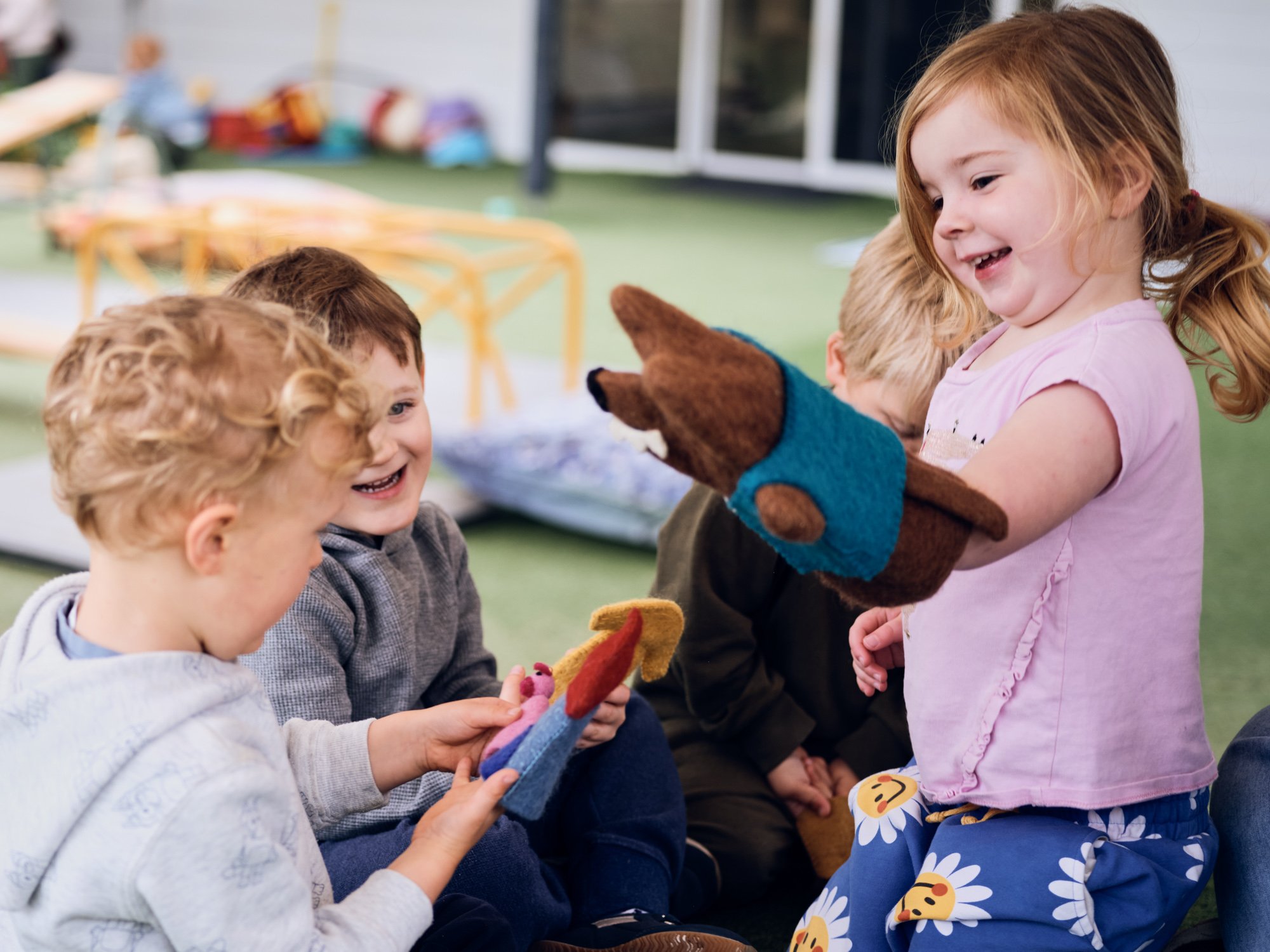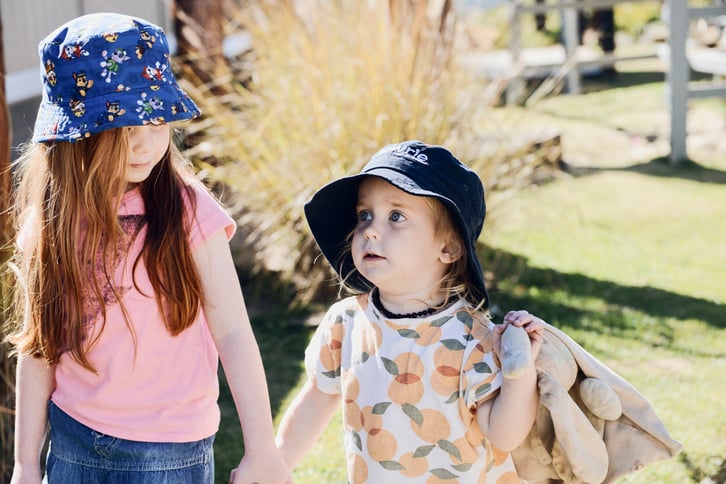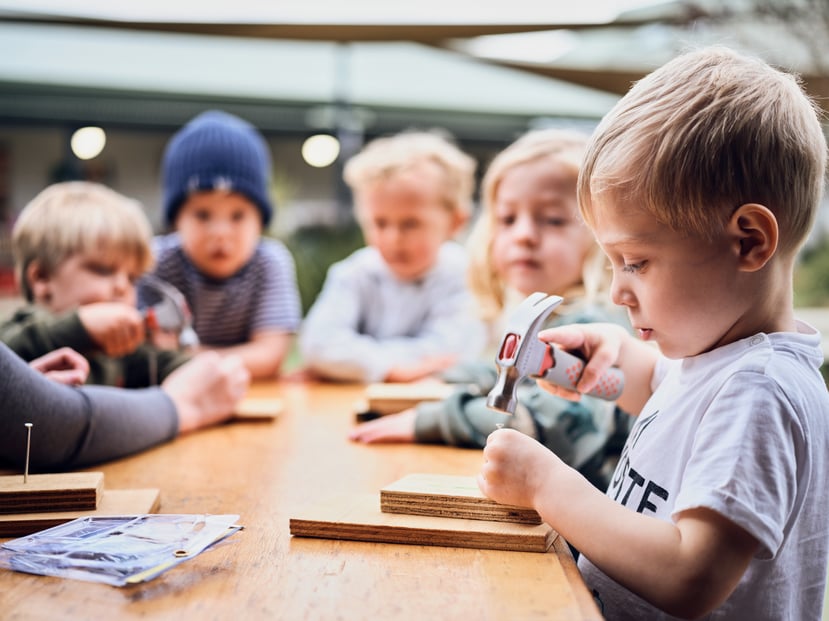There’s a reason that resilience is one of the latest buzzwords regarding children’s well-being and development. And that’s because it’s a skill that will help them not just in their adolescence, but all throughout their life.
Resilience helps children to deal with stress, trauma, change, grief and the everyday challenges of life. Being resilient doesn’t mean these things won’t affect them. What it means is that they will have the ability to bounce back or recover for them more effectively.
But resilience can also mean so much more for children’s development. We look at what resilience is, why it matters and how to support your child to develop this crucial skill.
On this page:
Why is Child Resilience Important?
Risk Factors and Protective Factors
What Factors Build Children's Resilience?
Key Features of Building Resilience In Children
Building Children's Resilience
Building Resilience in You Children: Tips For Parents
Developing Resilience at Gowrie NSW
Introduction
There’s a reason that resilience is one of the latest buzz words when it comes to children’s wellbeing and development. And that’s because it’s a skill that will help them not just in their adolescence, but all throughout their life.Resilience helps children to deal with stress, trauma, change, grief and the everyday challenges of life. Being resilient doesn’t mean these things won’t affect them. What it means is that they will have the ability to bounce back or recover for them more effectively.
But resilience can also mean so much more for children’s development. We take a look at what resilience is, why it matters and how to support your child to develop this crucial skill.
What Is Resilience?
Life is full of ups and downs. Resilience helps children – and adults – to deal with life’s downs. When things go wrong – which they inevitably will – resilience is the secret to bouncing back and having another go.
Resilience is a skill. Children aren’t born resilient. Rather, it’s a skill they develop over time.
Other than helping them to deal with tougher times in life, building resilience can also give them strength and confidence. They may have more belief in their skills and abilities and be better able to stand up for themselves.
Why Is Child Resilience Important?
Resilience has flow on effects to so many other areas of a child’s life.
Emotionally, resilient children recover more quickly from sadness, disappointment and frustration associated with challenges.
Socially, they are more confident, empathetic and likely to stand up for themselves. They are capable problem solvers and open to learning new things.
Mentally, they are more willing to step outside of their comfort zones and take safe risks. They deal with their problems in healthy ways rather than burying their feelings or lashing out.
Resilience is also associated with more positive physical health outcomes. Chronic stress due to lack of resilience in adulthood may be associated with health conditions such as high blood pressure.
Developing resilience in the early years will set your child up for success in life. 
Risk Factors and Protective Factors
There are a number of environmental factors that can impact on a child’s ability to develop resilience. These environmental factors can either have a protective effect or be a risk to the development of resilience.
Many of these environmental factors don’t just impact on a child’s resilience. They can also more broadly impact social, emotional and cognitive development.
Risk Factors
The factors below may reduce a child’s ability to be resilient. These experiences are inherently stressful and may impact the resources a child has to draw on when faced with a challenge. That’s not to say that a child who has the below experiences can’t develop resilience. It just means that they may have more challenges to overcome in the process.
- Parental mental illness or substance abuse
- Adverse childhood experiences such as abuse, neglect or loss of a caregiver
- Poor prenatal nutrition or care, including substance abuse during pregnancy
- Disharmony or conflict between parents
- Chronic stress associated with poverty
Protective Factors
As with the risk factors, exposure to protective factors doesn’t guarantee resilience. But when a child is cushioned by protective factors, it creates the optimal environment for them to develop resilience.
- Secure attachment with parents
- Supportive extended family – such as grandparents – and educators
- A nurturing, stimulating and stable home environment
- Parents with good parenting skills
- Low exposure to stressors
Signs Of A Resilient Child
What does a resilient child look like? Resilience isn’t something you can measure like height or IQ. But there are some qualities that a resilient child will display. These include:
- Empathy towards friends and siblings
- Responsibility for tasks and chores
- Independence with self-help skills (such as going to the toilet or getting dressed)
- Confidence to ask for help when they need it
- General positivity towards life and tasks
- Ability to solve problems
- Shows initiative
- Sets their own goals
- Continues to attempt a task, even following a failure
- Healthy relationships with family members and peers

What Factors Build Children’s Resilience?
How a child builds resilience depends on a number of different factors. There are internal factors, such as skills and personality traits of the child. And there are also external factors, such as the community, family and social environment around the child.
Resilience isn’t an isolated skill. It relies on other skills such as how a child copes with situations and if they can self-regulate their emotions. A resilient child generally needs to be confident with high self-esteem and a sense of optimism about the world. They generally have strong relationships with their family, peers and within the broader community.
It’s important to look at the whole child and equip them with a broad set of skills that will support their resilience.
Key Features Of Building Resilience In Children
Building resilience takes time. Think of it like a muscle, the more you work it, the more it grows. But a strong muscle needs the muscles around it to be equally strong. Below are some of the other “muscles” children need to develop to support their resilience. Each of these skills will help to set your child up for success in the early years and beyond.
Communication and problem solving skills
Resilience isn’t about independence and working through challenges on your own. A resilient child can communicate when they need help and how they’re feeling. They also don’t shy away from challenges but look at them as problems to be solved.
Ability to manage strong emotions
Emotions are a normal part of everyday life. Learning to recognise and self-regulate those emotions is an important life skill. When children face a challenge, they can be flooded with all types of strong emotions, from sadness to anger and frustration. While they may know that reacting angrily isn’t the right thing to know, being able to actually manage their response is quite tricky. This self-regulation plays a big role in building resilience.
Realistic and achievable plan
Planning gives children the ability to see the bigger picture and problem solve to get to the result they want. But, as you know, plans that are realistic and achievable are more likely to succeed. For example, if your child is struggling to make friends at child care, they might plan to speak to their educator for help. Or to approach a child playing independently rather than a big group of children. This shows resilience as they haven’t given up on the idea of having friends and they are setting themselves up for success with a realistic plan.
Supportive networks of nurturing relationships
Healthy, stable relationships and secure attachments are a strong predictor of resilience. Why? When children have these types of caring relationships, they likely have people who can support them through life’s challenges. Those people can provide reassurance and encouragement as well as help the child to identify their skills and strengths.
Confidence levels in abilities and strength
In many ways, a child's confidence and resilience go hand in hand. When a child is confident in their abilities, they may be more likely to face a situation rather than trying to avoid it. Self-belief is a powerful thing! Believing that you are strong enough and capable enough to overcome a challenge can be the difference between success and failure.
Building Children’s Resilience
Children don’t suddenly become resilient overnight. Rather, they build their resilience through experience.
Other than loving your child unconditionally – which you already do – how else can you support your child to build their resilience? Here are a number of supportive actions that will make a big difference.
Encourage your child to learn more about themselves
Help your child develop self-awareness and an appreciation of who they are as a person so they can draw on that when times are tough. By being able to recognise the qualities that make them special, they know what they can draw on to navigate challenges.
Self-awareness can also lead to other skills like greater empathy and strong internal motivation. All of which can help a child to be more resilient.
When you talk to your child, encourage them to reflect on how they handled different situations throughout the day. For younger children, these conversations may be quite simple. As they get older, the conversations will increase in complexity as their self-awareness grows.
Educate your child on self-care practices
Self-care can be a handy skill in your child’s resilience toolkit. As they get older, their problems will become bigger and more complex. To bounce back from these, they’ll likely need to draw on self-care practices.
Even very young children can learn mindfulness, meditation or breathing exercises They can also learn to use them when they face a stressful situation. You can use apps, podcasts or YouTube videos and learn the different techniques together.
Also, don’t forget about the importance of nutrition, exercise and sleep. A healthy lifestyle contributes to self-care.
Assist with problem-solving skills
Your child will use problem-solving skills in all areas of their life. From building a tower as a toddler to making friends at school and managing clients when they enter the world of work. To build resilience, the skills for solving problems are a crucial piece of the puzzle.
When your child has a problem to solve, support them by asking questions. Encourage them to think about what has worked in the past for the same or similar problem. Or even to break the problem down into smaller, simpler pieces. Be there as a sounding board for their solution and celebrate their success at the end.
With these skills, children are better equipped to deal with challenges. They see them as problems to solve rather than things to be afraid of.
Support your child but do not solve every problem
The key to problem solving is that your child learns to do it independently. That’s not to say that they can’t come to you for support or guidance but if you solve every problem for them, they won’t have the skills they need.
It’s natural to want to shelter your child from unpleasantness or disappointment. As tempting as it is to step in as a human shield of sorts, you won’t be doing them any favours. It’s the discomfort of needing to face a challenge that helps children develop resilience.
A younger child might need more hands on support to solve problems. As they get older and develop their skills, you can move into the back seat. Brainstorm solutions, make subtle suggestions and encourage them to step outside of their comfort zone.
Help your child identify and manage their emotions
The first step here is to let your child know that emotions are a good thing. The second step is in helping them to label their emotions. This helps to understand what they’re feeling and ultimately find more positive ways to express themselves.
Here’s an example to help you see how this would play out. Your child is trying to build a tower with their blocks but the tower keeps falling over. They’re understandably frustrated and throw some blocks across the room.
Instead of berating your child for their behaviour, tell them that you can see they’re frustrated that the tower keeps falling over. You can then encourage them to think of other ways to build their tower. Maybe you suggest a break. Or you could remind them that they can always ask for help. The next time they feel frustration, they’ll have some tools to self-regulate.
Build your child’s self-compassion
We all make mistakes. It’s part of being human. Mistakes are all part of the learning process. But if we beat ourselves up every time we get it wrong, it can lead to some pretty unhealthy patterns.
Resilient children practise self-compassion. They have a growth mindset that sees mistakes as an opportunity to learn and improve. Instead of avoiding risks for fear of failure, they are willing to step outside of their comfort zone and embrace whatever comes their way.
You can encourage self-compassion in your child by talking to your child about their mistakes. Talk about what they could do differently next time and let them know that mistakes are normal.
Build Resilience in Your Children: Tips For Parents
As a parent you might not feel equipped to teach resilience to your child. The tips below will help you to promote resilience skills no matter your parenting style.
Role model resilience
Children learn from everything their parents do… the good and the bad! What better way of promoting resilience than showing it in action? If you role model resilience for your child they can see it in action. Let them see your disappointment and the coping skills and emotional skills that you use. This helps to normalise setbacks.
Focus on relationships
A supportive relationship with a parent, family member or caring adult is the foundation of helping children build resilience. Show your child your unconditional love and use active listening to understand their needs and personality.
Give your child space
Children need to learn how to fail. They also need to learn how to ask for help. They can’t do either of these things effectively if they don’t have space. Give your child space to take healthy risks so they learn to stretch and challenge themselves… and then celebrate their bravery win or fail.
Use positive language
Teaching children resilience needs to focus on language that is positive, empowering and affirming. Acknowledge their emotional pain but teach them to reframe those feelings into possibilities with age appropriate language.
Developing resilience at Gowrie NSW
In our early education and care centres, we support children to develop the skills they will need to handle future challenges. Our qualified and experienced early childhood educators work closely with each individual child with a focus on building resilience.
Contact us to discuss our approach to care and how we can support your family in your early childhood education journey.




.jpg)





